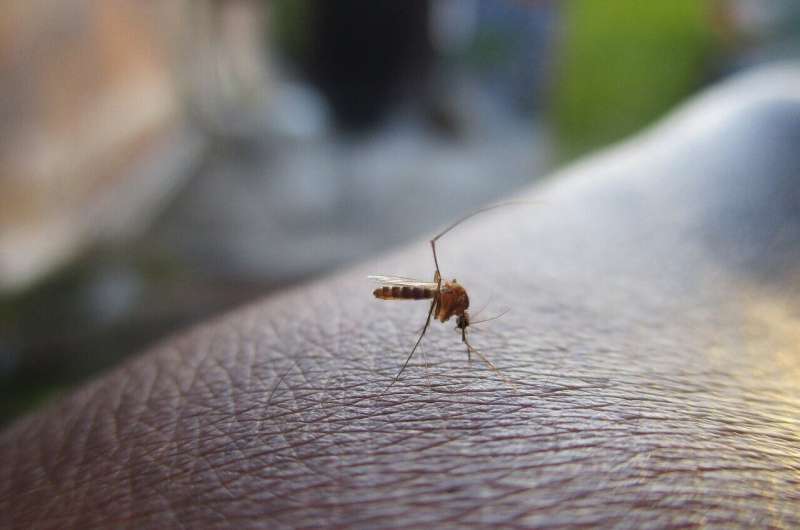Credit: Pixabay/CC0 Public Domain
Anopheles malaria mosquitoes in Africa and Latin America are evolving in response to human activity, studies in both continents have found.
Anopheles gambiae, the most significant malaria vector in Africa, is developing increasing resistance to pyrethroid insecticides, a study published in Scientific Reports this month shows. Synthetic pyrethroids are the most commonly used insecticide for controlling malaria mosquitoes worldwide.
The team of researchers from Kenya, Ghana and the US say the indiscriminate use of pyrethroid insecticides in agriculture and public health programs could be responsible for the moderate and high-intensity resistance.
The team collected mosquitoes in west Kenya and analyzed the results of a variety of tests, including exposing the mosquitoes to insecticides through several generations.
While the younger generations showed greater insecticide resistance, the researchers also found that reducing the use of the chemicals for at least 15 generations decreased the level of resistance. This restored the mosquitoes' vulnerability to the pyrethroid insecticides in a process that takes an average of two years.
"Public health authorities should rotate insecticides every year to beat mosquito resistance," lead author Maxwell Machani, an entomology expert at the Kenya Medical Research Institute, tells SciDev.Net.
However, Maria Anice Mureb Sallum, a professor it the University of São Paulo's public health faculty, says deeper research is needed in order to generalize the findings.
"OtherAn. gambiae populations could be tested in other regions of Africa with more varied insecticide exposure to see if the same mechanism works," says Sallum.
City adaptation
Astudy in Brazilpublished last month (22 October) shows that Anopheles cruzii, the primary malaria vector in Brazil's Atlantic Forest region is becoming more adapted to urban environments. This region includes São Paulo and Rio de Janeiro, the most populous cities in the country.
The researchers suggest that deforestation and the incursion of human settlements into the forest was driving genetic diversity among populations ofAn. cruzii. With fewer food sources, such as monkeys, to be found in the mosquito's natural habitat, it is more frequently found in cities, looking for food among humans.
"This is causing their genetic structure to be more varied, making the An. cruziimore present in urban environments," says lead author Laura Cristina Multini, an epidemiologist at the University of São Paulo.
The team does not yet know the potential implications of this genetic variation, but the study points to an increased likelihood of malaria outbreaks in cities in the Atlantic Forest region.
The researchers analyzed mosquitoes collected in urban, peri-urban and rural regions of Parelheiros, south of São Paulo city. They found greater genetic variation among mosquitoes found at the ground level compared with those found in tree canopies—suggesting an ongoing evolution process.
As it can fly long distances, the An. cruzii is difficult to control, Multini tells SciDev.Net.
"The best way to control this mosquito is by improving forest management and by avoiding illegal settlements in green areas," she says. With more animals to feed on, the insect is likely to remain in tree canopies, its preferred habitat.
Sallum says that studies are required across Brazil to understand whether similar patterns are occurring elsewhere. Sallum, who did not participate in either research, says both studies indicate that human activities are driving the adaptability of the mosquitoes.
"As human actions force a response from mosquitoes, we end up influencing their evolution," Sallum says.
More information: Laura Cristina Multini et al. The influence of anthropogenic habitat fragmentation on the genetic structure and diversity of the malaria vector Anopheles cruzii (Diptera: Culicidae), Scientific Reports (2020). DOI: 10.1038/s41598-020-74152-3
Journal information: Scientific Reports
Provided by SciDev.Net























